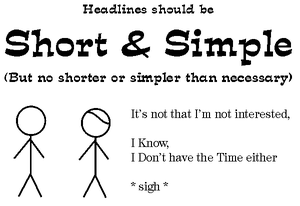Search engine marketing SEF/SEO

Having great content is only useful if it can be found. Search engine optimisation (SEO) improves the quality and quantity of visitors to your site.
This article helps to clarify optimisation and how you can help your content to match what visitors are looking for and be found more easily.
Search Engine Friendly
Pages that contain text in an organised fashion such as using appropriate html tags are more easily understood by search engines and so are likely to better match any visitor searches. Graphics can be identified and indexed using the alt tag. Context can be important and microdata aka rich snippets using schema.org can offer valuable insights.
Most web applications are, or at least should be designed to be Search Engine Friendly in that a search engine can visit each page, see, comprehend and then index the content. Content from browser side applications (e.g. flash) that aren't in the page mark-up are unlikely to be indexed so are best used for decoration.
Search Engine Optimisation
A useful if not essential exercise is to optimise each page so that it says one thing clearly, whether that is offering a product/service or expressing an idea. A clear and focused page is more likely to be matched when users search for the information contained in your page.
An added benefit is that when using Google AdWords to augment or expand relevant searches, these cost less and are more likely to be of interest to searchers when a page is closely aligned to AdWords and searches.
Good design is one half of the story, how it is used is the other.
Although visual appearance is important for conveying information to us humans, search engines only see the content and how it is laid out helps its task. Using a well designed template with Cascading Style Sheets (CSS) helps marry the two functions and makes our task of creating content easier if we work with the template.
Take this article for example, using bullet points it is easier to see how the individual parts of this article relate to each other. From both a search engine and human viewpoint it is clear how this article is structured so we both have a better understanding of its contents and so can better focus our attention and resources to best effect.
- Heading 1 - Marketing Communications
- Heading 2 - SEF/SEO
- Heading 3 - Search Engine Friendly
- Heading 3 - Search Engine Optimisation
By all means use additional formatting, it's one of the things that can make an article more readable, if it's structural though, it is usually far better to make your life easier and the site more consistent for your visitors by reviewing and re-designing the templates.
Descriptive Metadata can be seen as describing the contents of a page and is usually only seen by a search engine, the two main types being Description and Keywords. Search engines, if they use them at all, are usually able to asses if they are being used appropriately.
Structured content such as names and titles can be better comprehended with microdata, see https://schema.org.
For more information see our companion article Search engine optimisation beyond Blaise Pascal.
Both Humans and Machines appreciate good Spelling and Grammar, getting these two right makes communication so much easier. Non native speakers will be less confused and can more easily translate an article if the spelling is correct and search engines can offer those translation in their results. Fortunately most browsers offer spelling checkers as we type so there's almost no excuse for spelling mistakes.